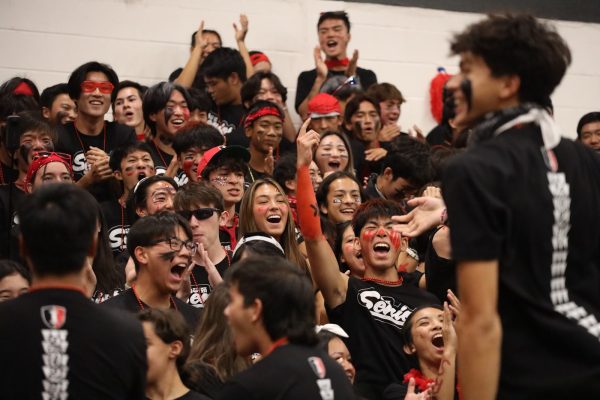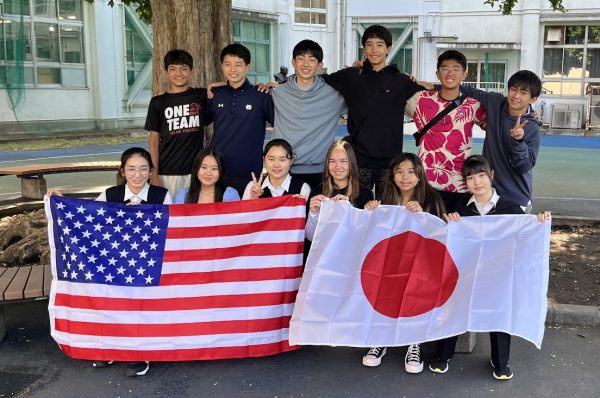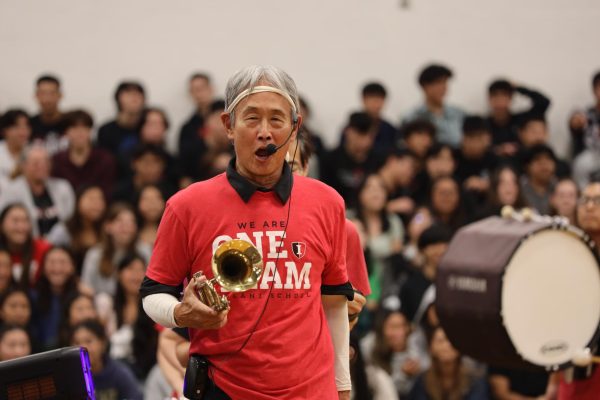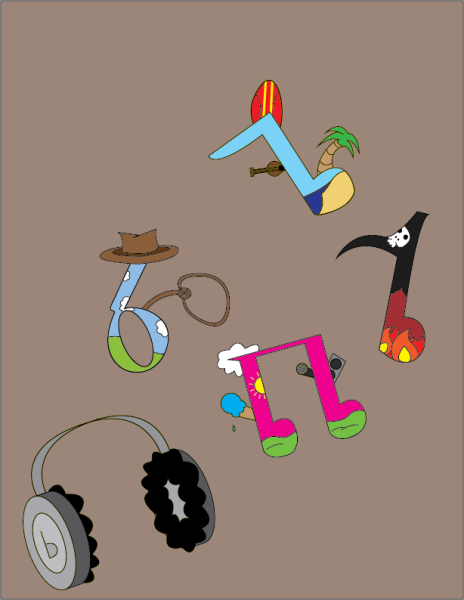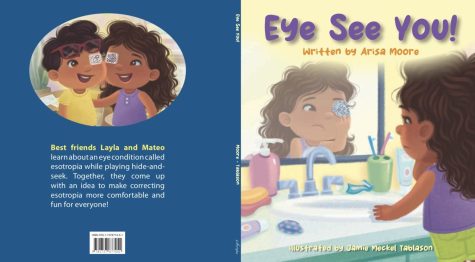Independent Research Feature: Effects of Social Media Appearance-Exposure on Young Adults’ Self-Perception and Using an Algorithm to Change It
Body shame was troubling me for a whole year. I always stared at the so-called Beauty Standard, and couldn’t stop comparing it with my appearance. Whenever I opened my online shopping software, my search histories were ideal body shape and losing weight. In the United States, more than 50% of girls and undergraduate female students reported that they have negative feelings towards their body (Grabe. Et al., 2008). It seemed that my mind’s perception and definition of beauty mostly came from those “perfect” and “ideal” pictures and videos found on Instagram and TikTok. I wanted to change such poisonous internalization. I was wondering if I could use a tool inside social media to change this kind of situation. Algorithms became my tool. Therefore, I am conducting independent research on how social media influences young adults’ self-perception and whether we are able to use algorithms to change it. In my research, I tested whether users are able to use some keyword searches to delude the analysis for them from those apps, and change the recommended content from social media to young adults by doing so. Young adults are still growing mentally and are constantly exploring the world, which means their life experiences may not be enough to support their perception of themselves. — Xinyi (Sissi) L.
Different social media apps have recently become popular, and therefore the majority of their users are young people who follow trends. For example, 16-year-olds to 26-year olds are found to be most active on Instagram (Appleton, 2017). To be more specific, young adults are still growing mentally and are constantly exploring the world, which means their life experiences may not be enough to support their perception of themselves. Thus, at this stage, the information input from social media would affect their perception of themselves easily. After being exposed to a large number of such perfect pictures, it is easy for these young adults to measure themselves against such impossible standards (Fosch, 2021). Therefore, these “unrealistic” pictures would distort young adults’ self-perceptions and cause infinite anxiety about their own looks and bodies. These negative attitudes even cause some health problems like anorexia or bulimia (Grabe. Et al., 2008).
My research question is how does the appearance-exposure on social media influence young adults’ self-perception and whether we are able to change it with algorithms, using certain keywords to reduce the amount of unrealistic pictures on young adults’ Instagram recommended page.
Firstly, I designed a survey to collect the data on the extent to which social media affects adolescents’ appearance anxiety and body image anxiety, as well as to collect adolescents’ thoughts about what they expect to see, so that subsequent study steps can use these thoughts to improve the content they see that makes them anxious. I designed my survey based on some questions that two earlier studies used before. The survey was divided into three parts. The first section collected information about the participants’ social media usage, including the frequency of social media use and time spent on social media (Fardouly et al., 2017). The second section collected information about social media content, such as articles and videos, influences on the definition of beauty, judgment of their own appearance, and emotional impact in their minds (SATAQ-3;Thompson et al., 2004). The third section collected the keywords that participants expect to receive in social media: pet, food, funny videos, and MBTI. The answers to all the questions were divided into five scales from definitely agree to definitely disagree, and participants were asked to choose from a wide range of questions depending on their level of agreement with the questions in the questionnaire. The range of answers will be more standard than the yes and no answers to show the participants’ real thoughts.

Secondly, I collected and organized the data from the first two parts of the survey. I made graphs and tables of those data, and then analyzed the content that young adults expected to see, and created the initial Keyword List.
Thirdly, I tested each keyword. I screenshotted the “recommended content” under the search box and collected the number of “Body or appearance image” pictures on that page. Then I typed in each keyword in the search box. I viewed 10 posts, stayed 3 seconds on each post, and liked all the posts. Then I went back to the recommended page and refreshed it. I collected the percentage of “Body or appearance image” pictures on that page. Finally, I compared the percentage differences and organized and collected the final Keywords List.
Results show that large amounts of unrealistic body images do influence young adults’ self-perception on appearance and body shape, but the Keyword List is able to reduce the number of those unrealistic pictures efficiently.
The result of the survey on the use of social media is consistent with my hypothesis that the exposed appearance of social media influences young adults’ self perception. In 90 participants’ answers of the survey, 57 (63.3%) participants open social media more than ten times a day. 24 (26.7%) participants spend 60 to 120 minutes per day on social media. 29 (32.2%) participants spend 121 to 180 minutes per day on social media. 17 (18.9%) participants spend more than 180 minutes per day on social media. Therefore, young adults are used to opening SNS and spend a lot of time browsing the content on it every day. Thus, the content presented to young adults on those social medias becomes a key factor to influence them. 57 (63.3%) participants chose “agree” or “definitely agree” on the idea that social media is an important source of information about fashion and being attractive. 55 (61.1%) participants chose “agree” or “definitely agree” on the idea that they care about the body shapes and appearances of people who are on social media (Figure 4). Such data proves that body images on social media do influence young adults’ aesthetics and perceptions of themselves.
In Rachel Cohen, Toby Newton-John, and Amy Slater’s research, done in 2017, found out that more engagement on appearance-focused social networking sites (SNS) , but not general Facebook use, was associated with greater body image concerns. Therefore, I focused on the images on SNS. Compared with Facebook, Instagram is purely a photo-based platform and is renowned for the ubiquity of “selfie” and “body image”. Then I chose to test my Keyword List that is made up of content young adults expect to see on SNS. The results of the Keywords Test show that after searching some specific keywords, the “perfect” unrealistic pictures in recommended content of Instagram can be reduced quickly. For example, after searching “MBTI”, the average number of “perfect” body pictures on six phones reduced from 9.167 to 2.5. At the same time, some keywords can help to maintain the low amount of “perfect” body image in the recommended content of Instagram. For example, after searching “funny video”, the number of “perfect” changed from 3.3 to 2.3, in a low range (Figure 6). After the search, the algorithm is recalculated and Instagram’s analysis of what users are interested in changes to suggest new content related to that keyword to young adults. Therefore, it is feasible to use Keywords List to influence the content recommended by Instagram to young adults.
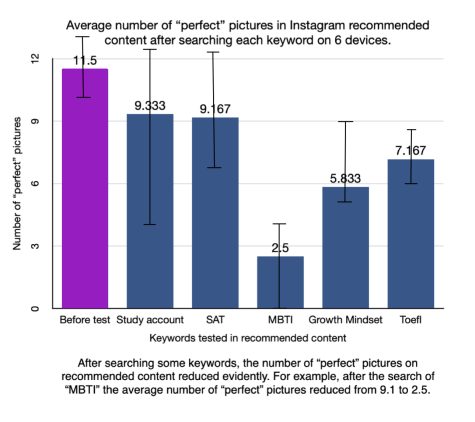
All in all, the time young adults spend on social networking sites (SNS) shows that social media is an integral component of young adults’ lives nowadays. And the results of my survey prove that seeing unrealistic body image in social media influences young adults’ self-perception because SNS will drive them to compare themselves with an impossible beauty standard and change their appreciation of beauty. On the other hand, I found out that we are able to apply Keywords List on Instagram to use algorithms to reduce appearance-exposure pictures. As for my keywords test result, there are some keywords that quickly reduce the number of ‘perfect’ photos on Instagram’s recommendations page after a search, and increase the amount of content that is correlated to the keyword. Thus, the corresponding body image concern of young adults can be reduced efficiently.
References
Milan, S. (2015). When algorithms shape collective action: Social media and the dynamics of cloud protesting. Social Media+ Society, 1(2), 2056305115622481.
Appleton, B. (2017). 79 Social Media Statistics You Can’t Ignore. Retrieved June 14, 2017, from https://www.envision-creative.com/social-media-statistics-roundup
Fosch-Villaronga, E., Poulsen, A., Søraa, R. A., & Custers, B. (2021). Gendering algorithms in social media. ACM SIGKDD Explorations Newsletter, 23(1), 24-31.
Grabe, S., Ward, L. M., & Hyde, J. S. (2008). The Role of the Media in Body Image Concerns Among Women: A Meta-Analysis of Experimental and Correlational Studies. Psychological Bulletin
Fardouly, J., Willburger, B. K., & Vartanian, L. R. (2017). Instagram use and young women’s body image concerns and self-objectification: Testing mediational pathways. New Media & Society.
Thompson, J. K., Berg, P. V., Roehrig, M., Guarda, A. S., & Heinberg, L. J. (2004). The sociocultural attitudes towards appearance scale-3 (SATAQ-3): Development and validation




